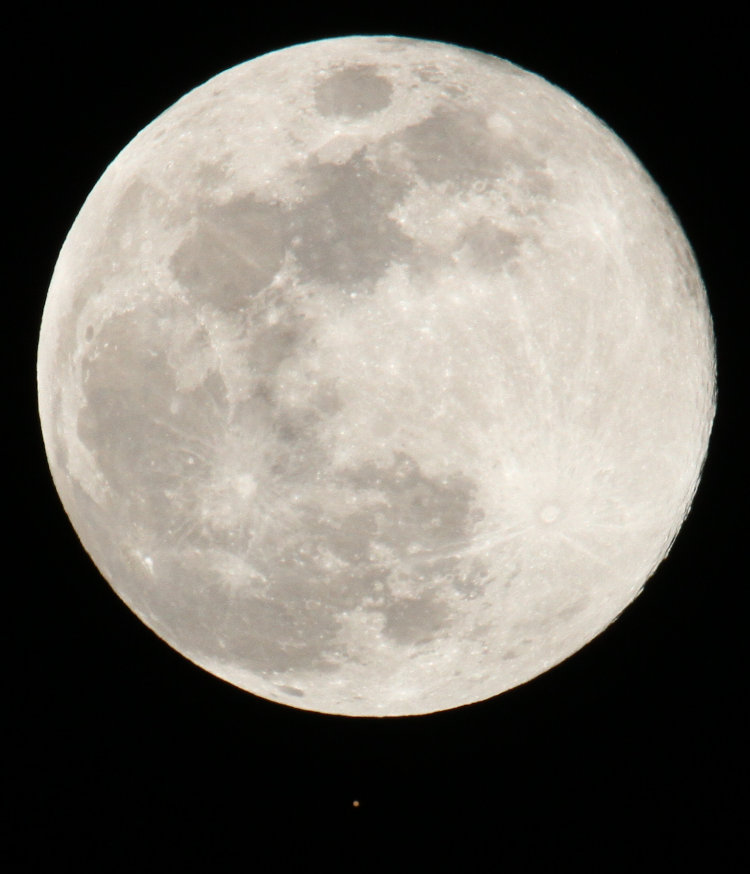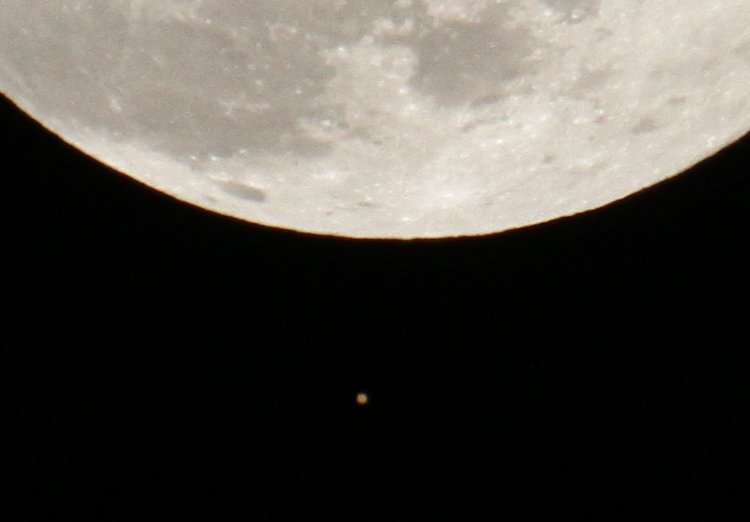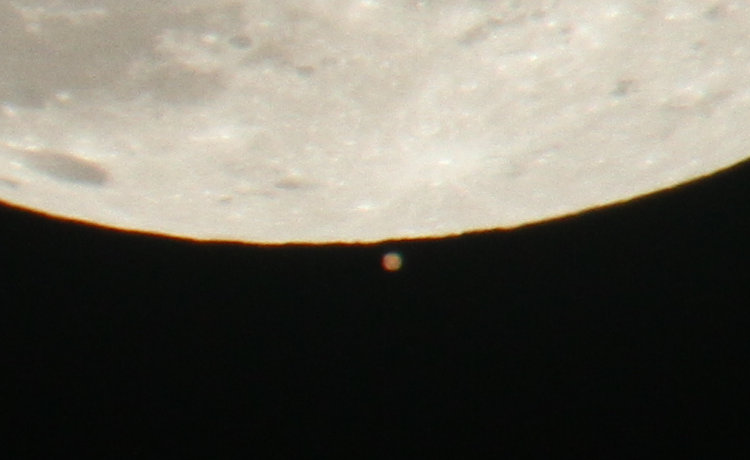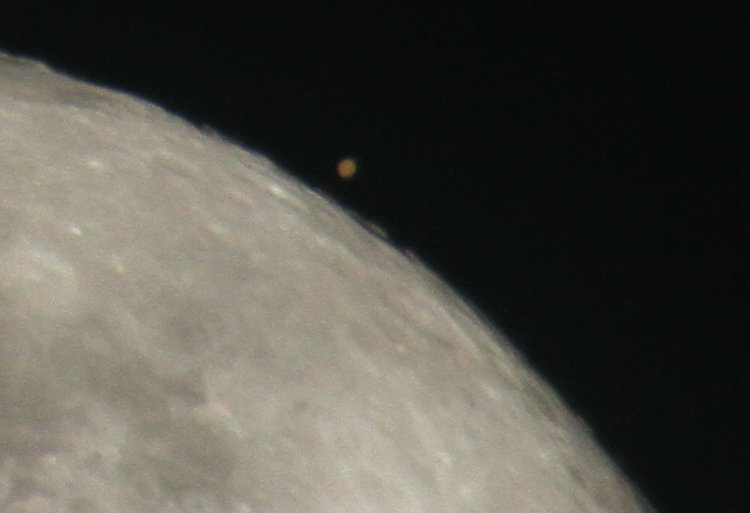So I did indeed get out to view the occultation of Mars by the mean ol’ moon (ours, I mean, not any of the other planets’,) and even snagged a couple of video clips. The nice thing was, Mars was bright enough to be seen near the moon with only a slight overexposure of the moon itself, so that worked out acceptably well.

You can see it easily down there at the bottom, and also that the moon isn’t quite full, but close enough for our purposes (well, any phase would be fine for our purposes, and even a crescent might have looked cool.) This was with the Tamron 150-600 at 600mm of course, which we can zoom in on to see at full resolution.

Video resolution would be different, though, so I switched over to using the 2X teleconverter with the lens – this reduces light by two stops, but this was easily compensated with aperture and ISO.

You can actually make out some striations on Mars now, though I’m not 100% sure this isn’t atmospherics and lens aberrations – one of my frames appears to show the polar cap, while others don’t, and there was evidence of increasing high-altitude humidity.
Now, I did get the telescope out, and temperature-stabilized and collimated and everything, but it was close to a waste of time: the camera mount that I had for it wouldn’t work with the objective standoff, and I couldn’t achieve focus – the sensor was too far away from the focal point. During the occultation, I amused myself with looking at some details on the moon and even a bit of the nebulae around Orion’s dagger, but that was about it, and couldn’t do a thing about getting images. I have a webcam adaptation that I need to get working, so there’s that project.
But, I did shoot video with the long lens and teleconverter, at least:
As mentioned within, Stellarium’s plotting of the times seems to be slightly off; I’ve noticed this before, so naturally on the reappearance I started early to capture the right moment, but this meant that the moon was moving out of the frame during the reemergence, leading to my little screwup. Not that big a deal, since the resolution was still too low for a nice look anyway, not to mention those cirrus clouds reducing the visibility.
[A note about the motion: what you’re seeing is mostly the rotation of the Earth, causing both the moon and Mars to slide across the sky. But the moon itself is revolving around the Earth in the opposite direction, quite slowly in comparison since it takes 28 days to do a full orbit. This means that everything appears to be moving to the upper right (for this time of night and perspective, anyway,) but the moon still blots out Mars in the opposite direction, or Mars slides behind the moon as it overtakes it, whatever you like. It’s the same with eclipses. Seems odd, but most of the apparent motion is just the Earth turning.]
The same full-resolution view of Mars after it reappeared looks much worse now due to atmospheric distortion:

I did several frames, tweaking focus in between, but this was the clearest that I achieved. It did not help that the moon was significantly higher now and required an awkward position to see through the viewfinder, and I was viewing through glasses that weren’t flat to the eyepiece. I should have dug out the right-angle viewfinder attachment.
Overall, though, it was successful, just not as close or resolved as I would have liked. Still working on it.



















































